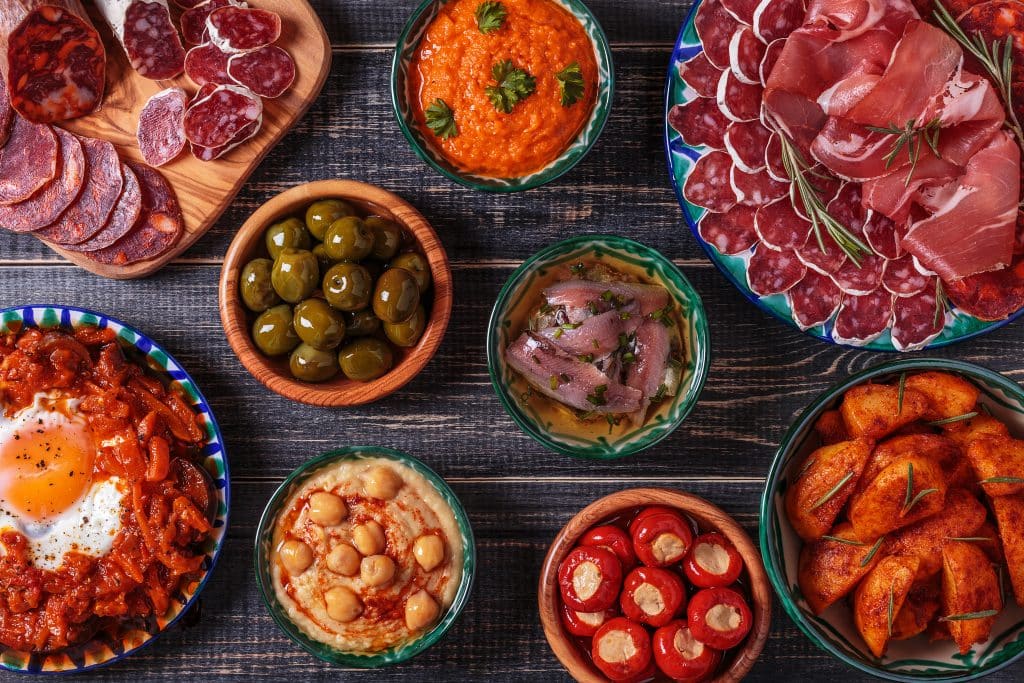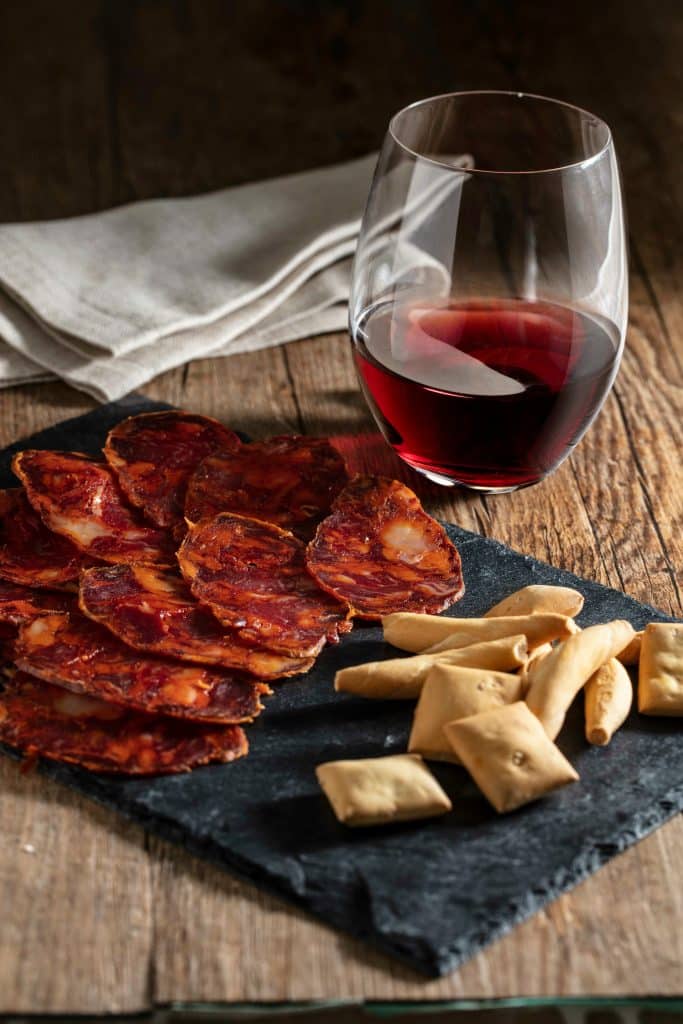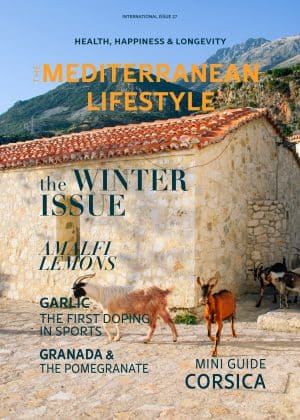SMALL SAVORY DISHES THAT CAN BE SERVED COLD & WARM, AS PINTXOS, TABLAS OR TOSTAS, BUT ALWAYS WITH A DRINK!
TAPEAR
“Let’s go out and walk to various bars”
In Spain, tapas are more than just food. They are probably the best way to illustrate and express the Spanish way of life. Each region celebrates tapas culture in its own distinct way, yet all areas have one thing in common, they are an ingrained social sharing activity enjoyed in good company.
Whether you are walking through a small village or wandering through the big city, these culinary specialties, which are very typical of Spanish gastronomy, are enjoyed throughout the country as Spaniards love to socialize outside of their homes. They are a small aperitif that usually accompanies a drink and serves as an appetizer.
The word “tapa” comes from the Spanish word tapar, which means “to cover.” Although today the word tapa is present in most restaurants and bars in all cities in Spain (and some abroad), this concept has always been closely linked to Andalusia, and not without reason. We have to go back to the 13th century, to the reign of Alfonso X in the 13th century, to find the origin.
It was he who decreed that the wine should not be served alone in the inns, to save the guests from going to their heads. Therefore, small snacks made of slices of ham or pieces of cheese were placed on the glass to cover the contents.

But there are also some other completely different theories. According to these rumors, it is said to have been in Cadiz during a visit by King Alfonso XIII in the early 20th century. When the king ordered a glass of sherry, the wind was so strong that day that the waiter, afraid that sand would get into the glass, put a slice of ham on top of the glass as a lid.
The King asked for clarifications and liked the idea so much that he ordered the following wines with the same tapa by the glass. The idea was cleverly taken up and many bars began offering snacks with every drink in hopes of boosting sales. Although its true origins may be unclear, there is no denying that the culture of “tapas-eating” is very popular not just throughout Spain but around the world.
Most people eat tapas before a late Spanish dinner, while others make it their own as a meal, ordering multiple plates in a group, sharing and enjoying. In Spain, tapas bars are less formal than restaurants and many have standing room only at the bar or at a high table to eat whilst standing.
As a result, a new tradition has developed that most people will have a drink and a tapa in one bar before moving to another, thus spending a night trying different foods and drinks. Some tapas are elaborate plates, others consist of olives or potato chips. Some are hot, some cold, in some places they are free and in others you have to pay.

In Andalucia, it’s common to order several types of tapas and stay for a while. In Granada, probably the most famous tapas spot in Andalusia and one of the best in Spain, you can get great tapas for free with your drink. Segovia, famous for its aqueduct, is another city that offers these snacks for free.
In San Sebastián, in the Basque Country, tapas are called pintxos and must be ordered. The name derives from the verb pinchar, which means something like “to impale”. Many pintxos are usually served skewered with a toothpick on a piece of crusty bread. The Basque Country enjoys what might be called “tapa hopping”, which means one tapa and one drink per establishment.
In Madrid, the capital of Spain, you might get to taste one of the best patatas bravas and in Santander, the northern city known for its exquisite gastronomy, there is one tapa that stands out from the rest and that is the squid rings. The most touristic city in Spain, Barcelona, in addition to the well-known tapas, offers a type of croquette known as a bomb in the Barceloneta district.

WHAT ARE TAPAS?
The most classic tapas are usually very simple and some don’t even need to be cooked. There are different types of tapas:
WARM TAPAS
These tapas are cooked and served warm. From albondigas to gambas al ajillo, croquetas, succulent grilled pork skewers, chorizo a la Sidra, patatas bravas, pulpo gallego, and tigres-mejillones rellenos.
COLD TAPAS
Cold tapas are often prepared in advance and displayed on the bar counter. Some traditional ones are ensaladilla rusa, goat cheese with caramelized onions, morcilla, tortilla, pimientos del piquillo rellenos de atún and boquerones en vinagre.
PINTXOS
Like tapas, pintxos can be hot or cold. Some popular ones include bacalao, brocheta de gambas, pimientos del Padrón, angulas, bacon wrapped dates, chistorra, gilda and pintxo de pulpo.
TABLAS
Tablas are cheese and sausage platters and the perfect accompaniment to a glass or two of wine! Some of the most valuable gourmet products in Spain, in particular the legendary Jamón Ibérico and Manchego cheese, can be tasted in this way accompanied by a glass of wine or a caña.
CANNED GOODS
Canned goods are the secret favorites of Spanish gastronomy. These are made with tasty marinades and the highest quality standards and compete with attractive designs and artistic packaging that are often used as decoration. In recent years, gourmet style preserves have gained prominence, proving to be an exquisite alternative for the most discerning palates.

Most people eat tapas before a late Spanish dinner, while others make it their own as a meal, ordering multiple plates in a group, sharing and enjoying. In Spain, tapas bars are less formal than restaurants and many have standing room only at the bar or at a high table to eat standing. As a result, a new tradition has developed that most people will have a drink and a tapa in one bar before moving to another bar, thus spending a night trying different foods and drinks. Some tapas are elaborate plates, others consist of olives or potato chips. Some are hot, some are cold. In some places they are free, in others you have to pay.
The article was first published in the Issue 19








